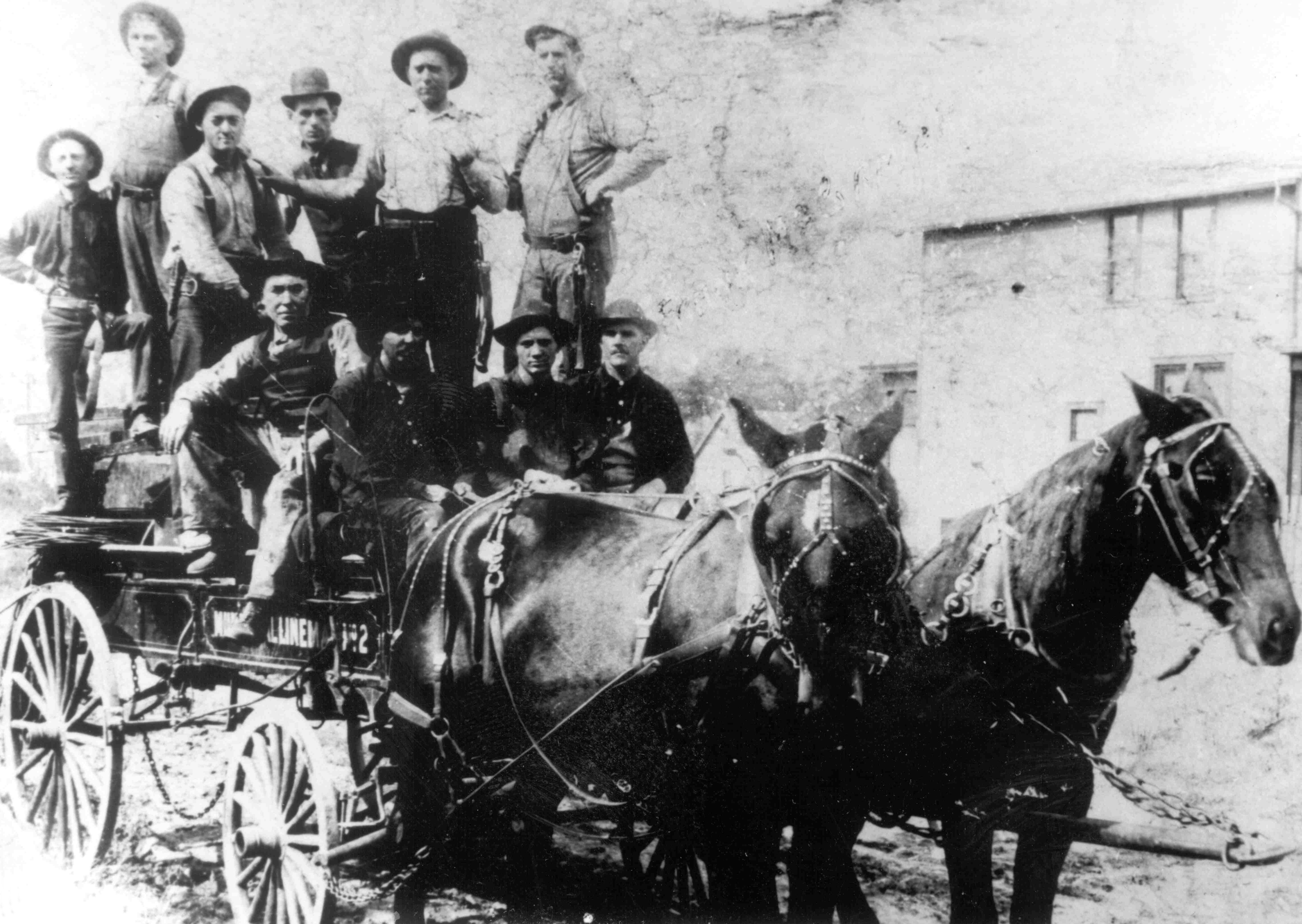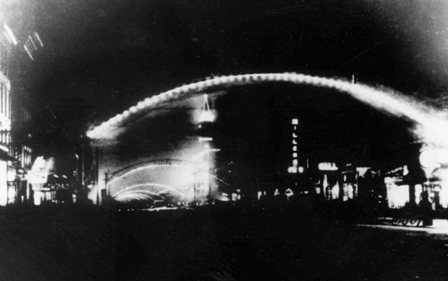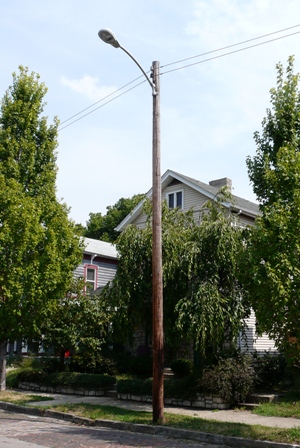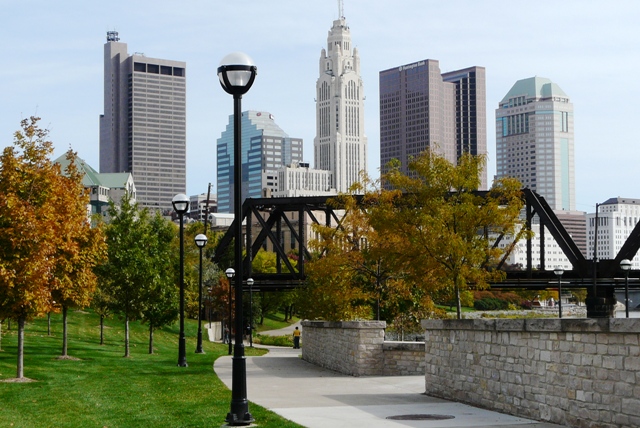History of Streetlights & Municipal Power in Columbus

1800's
Columbus gets its first streetlights, which are gas powered in 1844. By 1880, the first workable lighting system is unveiled at the Ohio State Journal newspaper offices. Several private electric companies are established including Columbus Electric Light, Columbus Edison Electric Light, and Columbus Electric Light and Power, some of which are used to light streets. In 1896, costs to light the streets exceeds $70,000 per year. Following a feasibility study for Columbus to run its own streetlight system, voters approve a bond sale to build a new city-owned power plant. A lack of agreement on City Council delays things for a few years; however, successful mayoral candidate Samuel Black promises voters that the plant will be completed. Columbus' power plant goes on line in 1899 with a 264 horsepower engine; however, arc lamp capacity was limited so many lights remain on private service for a few more years.Columbus gets its first streetlights, which are gas powered.
1900 - 1950
 In the early 1900's, municipal power takes over the lighting of the decorative arches (see photo to right) on High Street, making Columbus known as the City of Arches. These arches would return years later in the city’s Short North area. By 1910, the division began making power available to public buildings and commercial businesses in the downtown area. City Hall and the water works were among the first customers, followed by Grant Hospital, the library, drugstores, hardware stores and churches. In the 1920's, the Dublin Avenue power plant gets updates to keep up with increasing demand and to improve efficiency. Despite the Depression in 1933, the division experiences financial health to continue operating the street light system in Columbus. The division serves 6,268 customers by 1935. Throughout the 1930's to 1950's the division again makes necessary upgrades to the system to meet the demand of electricity. This includes a new boiler and 12,500 kilowatt turbine generator
In the early 1900's, municipal power takes over the lighting of the decorative arches (see photo to right) on High Street, making Columbus known as the City of Arches. These arches would return years later in the city’s Short North area. By 1910, the division began making power available to public buildings and commercial businesses in the downtown area. City Hall and the water works were among the first customers, followed by Grant Hospital, the library, drugstores, hardware stores and churches. In the 1920's, the Dublin Avenue power plant gets updates to keep up with increasing demand and to improve efficiency. Despite the Depression in 1933, the division experiences financial health to continue operating the street light system in Columbus. The division serves 6,268 customers by 1935. Throughout the 1930's to 1950's the division again makes necessary upgrades to the system to meet the demand of electricity. This includes a new boiler and 12,500 kilowatt turbine generator
1960 - 1990

In 1969, a contract is awarded to Columbus & Southern for supplemental power, following contentious negotiations that included the company trying to take over the utility. In 1977, the city sells bonds to build a waste to energy plant on the south side of the city for supplemental power, becoming known as the trash burning power plant. Because of the efforts by AMP Ohio, power costs decrease resulting in a savings of $132,000 for the division in 1982. With the savings, the division embarks on an ambitious street light program where two-thirds of the city neighborhoods receives street lighting by 1987. By the end of the 1980's, the city had ceases to produce power at the Dublin Avenue power plant.
1990 - Present
In 1994, the city leases the trash burning power plant to the Solid Waste Authority. However, shortly thereafter the plant closes due to new environmental air regulations. The division moves to its current location at 3500 Indianola Avenue in 1999. In late 2014, the city's former Dublin Avenue power plant is sold to a private company for redevelopment in what has become known as the Nationwide Boulevard or Arena District area. By 2015, the division now has 12,000+ customers and 55,000 streetlights installed across the city.
 The Columbus Division of Power's purpose has remained much the same during its more than a century of service: providing reliable street lighting for people living in or traveling through the city, with the total cost of this system supported by the sale of electricity.
The Columbus Division of Power's purpose has remained much the same during its more than a century of service: providing reliable street lighting for people living in or traveling through the city, with the total cost of this system supported by the sale of electricity.